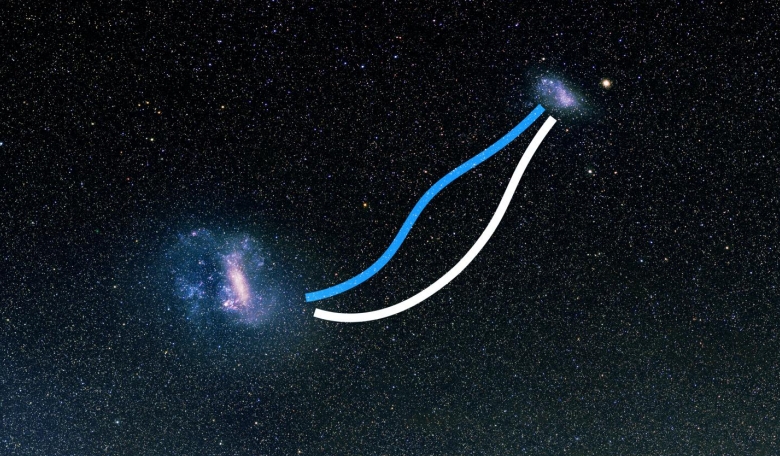A research team led by astronomers from the University of Cambridge has discovered that the Magellanic clouds appear to be connected by a bridge that stretches across 43,000 light years. Although because of their brightness and easy visibility in the night sky the Magellanic Clouds were discovered in antiquity, astronomers were unable to study them in detail until recently.
The study is based on data from the European Space Observatory, Gaia. The first batch of information, which includes the positions and brightness of a billion Milky way stars, became available three months ago and can be freely accessed.
Data obtained by Gaia satellite is unique. Gaia has two telescopes that share the one metre wide focal plane. Because of a greater field of view, it can take digital images of the entire sky, instead of just a portion of it. Gaia is set up to spin around its axis, covering the entire sky in less than 30 days. This enables it to record changes over time, and not just measure the stars' properties. The astronomers are then able to locate various objects and events, including pulsars or explosions.
The Cambridge team used Gaia data to study the Magellanic Clouds and locate RR Lyrae stars, which are very old and chemically unevolved. These types of stars have been around as long as the Clouds themselves and are useful in studying the history of these dwarf galaxies. Gaia has greatly simplified studying the Magellanic Clouds, as it is able to cover the large area over which they spread.
The astronomers found that the Large Magellanic Cloud (LMC) has a low-luminosity halo that stretches as far as 20 degrees from its center. The LMC would have to be significantly bigger than previously thought to hold on to stars at such distances, making it potentially as big as a tenth of the mass of the Milky Way.
During the study, the team has found a stellar stream, which is a stream of stars formed when a dwarf galaxy or a star cluster (a satellite) feels the tidal force of the body it orbits. These tides pull the satellite to and from the host, which eventually forms two openings on the satellite's periphery, small regions where the gravitational pull of the satellite is balanced by the pull of the host. Satellite stars that move into these regions find it easy to leave the satellite and begin orbiting the host. As more stars leave the satellite, they leave a trace on the sky that reveals the satellite's orbit. "Stellar streams around the Clouds were predicted but never observed," explains Dr Belokurov, study co-author. "Having marked the locations of the Gaia RR Lyrae on the sky, we were surprised to see a narrow bridge-like structure connecting the two clouds. We believe that at least in part this 'bridge' is composed of stars stripped from the Small Cloud by the Large. The rest may actually be the LMC stars pulled from it by the Milky Way."
"We have compared the shape and the exact position of the Gaia stellar bridge to the computer simulations of the Magellanic Clouds as they approach the Milky Way", explains Dr Denis Erkal, another co-author of the study. "Many of the stars in the bridge appear to have been removed from the SMC in the most recent interaction, some 200 million years ago, when the dwarf galaxies passed relatively close by each other. We believe that as a result of that fly-by, not only the stars but also hydrogen gas was removed from the SMC. By measuring the offset between the RR Lyrae and hydrogen bridges, we can put constraints on the density of the gaseous Galactic corona."
The discovery was
reported in the journal Monthly Notices of the Royal Astronomical
Society (MNRAS).











